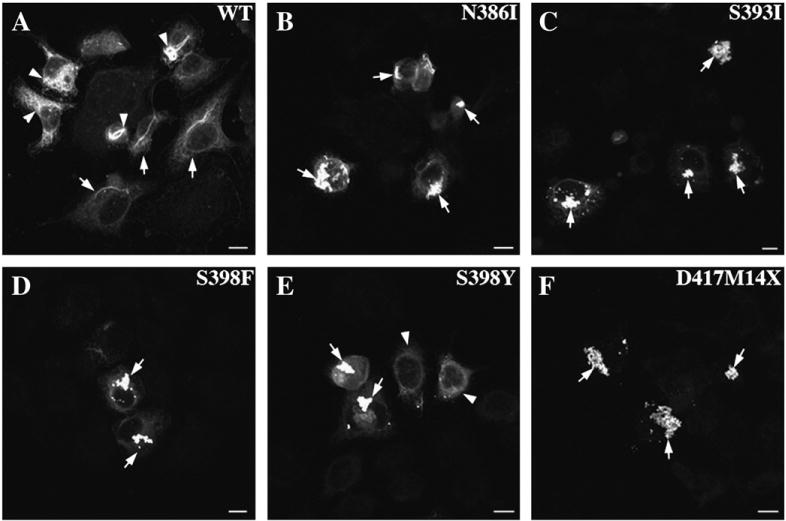Fig. 5.

Effect of GFAP tail mutations upon the de novo IF network formation. SW13/cl.2 (vim−) cells were transiently transfected with either WT or mutant GFAP. At 48 h after transfection, cells were processed for immunofluorescence microscopy and probed with the SMI-21 monoclonal anti-GFAP antibody. When expressed in this cell line, WT GFAP assembled into filamentous networks (A, arrows) that tended to bundle (A, arrowheads). In contrast, mutant GFAPs mainly formed cytoplasmic aggregates in transfected cells (B–F, arrows). Bar = 10 μm.
